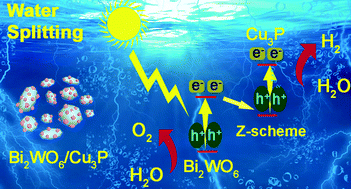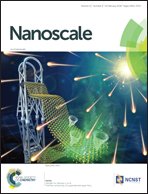Mediator- and co-catalyst-free direct Z-scheme composites of Bi2WO6–Cu3P for solar-water splitting†
Abstract
Exploring new single, active photocatalysts for solar-water splitting is highly desirable to expedite current research on solar–chemical energy conversion. In particular, Z-scheme-based composites (ZBCs) have attracted extensive attention due to their unique charge transfer pathway, broader redox range, and stronger redox power compared to conventional heterostructures. In the present report, we have for the first time explored Cu3P, a new, single photocatalyst for solar-water splitting applications. Moreover, a novel ZBC system composed of Bi2WO6–Cu3P was designed employing a simple method of ball-milling complexation. The synthesized materials were examined and further investigated through various microscopic, spectroscopic, and surface area characterization methods, which have confirmed the successful hybridization between Bi2WO6 and Cu3P and the formation of a ZBC system that shows the ideal position of energy levels for solar-water splitting. Notably, the ZBC composed of Bi2WO6–Cu3P is a mediator- and co-catalyst-free photocatalyst system. The improved photocatalytic efficiency obtained with this system compared to other ZBC systems assisted by mediators and co-catalysts establishes the critical importance of interfacial solid–solid contact and the well-balanced position of energy levels for solar-water splitting. The promising solar-water splitting under optimum composition conditions highlighted the relationship between effective charge separation and composition.



 Please wait while we load your content...
Please wait while we load your content...